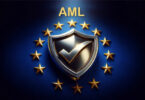The European Securities and Markets Authority (ESMA) has launched a call for evidence to see whether there’s a need to change rules – the regulatory technical standards (RTS) – for the DLT pilot for securities that’s expected to start in 2023. It’s looking for input by 4 March 2022.
As context, the EU is working on regulatory plans for crypto-assets. On the one hand, stablecoins and cryptocurrencies will be covered by the draft MiCA legislation. However, this does not address securities.
A separate DLT pilot regime covers the use of blockchain for stocks, bonds, and UCITS, Europe’s version of mutual funds. While the legislation is not yet final, the European Parliament and European Council reached an agreement on the wording in November 2021. It’s expected that the law will be passed around March 2022, and it will come into force nine months later, so early 2023.
It allows for a sandbox program that applies the following limits: for stock issuance, ETFs or UCITS up to €500m ($565m), bonds up to €1 billion ($1.1bn) and corporate bonds up to €200m ($225m) with an overall limit of €9 billion ($10.2bn) for any financial market infrastructure (FMI).
There are three types of platforms when it comes to the sandbox – DLT based trading venues, post-trade and settlement services, and those combining both sets of functionality.
ESMA is looking for input on technical standards that will apply during the sandbox period relating to transparency and reporting requirements.
It wants to ensure that the full benefits can be gleaned from DLT, which could radically reduce costs for incumbents. At the same time, ESMA wants to make sure that data stored on blockchain platforms preserve “quality, usability and comparability”.
While original drafts of the EU legislation talked about proprietary DLT platforms, the latest draft does not and aims to be technology agnostic. Hence ESMA has explicitly asked where feedback might be different in a permissionless versus a permissioned blockchain environment.







